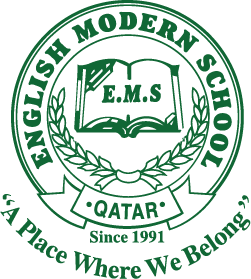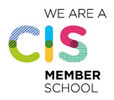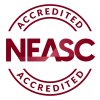At our school, Arabic is not just a class or a test. It is a living learning experience that shapes speech, thinking, taste, and values, and connects our students with their heritage, faith, and Arab-Islamic national identity in Qatar. We design step-by-step learning paths, plan activities that respect individual differences, and build strong partnerships with families and the community so that the impact of learning goes beyond school into daily life.
We teach Arabic as a tool for understanding and making meaning, not only as an exam subject. We believe language builds the learner’s awareness and identity and opens doors to thinking, communication, and creativity. For this reason, we offer a coherent learning journey that begins with reading and leads to effective writing and confident speaking. Along the way, students practice careful observation, aesthetic appreciation, respectful dialogue, and active listening. Our goal is to enable every learner to read, write, and express themselves in Arabic, to value it as culture and identity, and to live by its ethical and human values—while building key 21st-century skills: critical thinking, creativity, communication, and collaboration.
Students move through leveled pathways that consider their needs and differences. We choose age-appropriate texts that match their interests and open doors to thoughtful reading that builds inference, analysis, and enjoyment at the same time. In writing, we do not teach isolated structures; we guide students to form ideas, organize them, and express them in correct language with a rich vocabulary. We then review their work kindly and with clear criteria, so they can feel steady improvement day by day. In class, presentation and dialogue skills are shaped through practical situations—discussion, recitation, and debate—so students learn to listen before they speak, to disagree politely, and to give evidence for their views.
Culture here is not an extra to the curriculum; it is a wide educational space. Arabic Language Week, the Book Fair, and poetry and recitation platforms are not passing seasonal events; they are learning stations that strengthen taste and connect students with both their heritage and the modern world. In hallways and exhibition spaces, childhood poems sit beside stories from tradition, creating a shared memory that protects beauty and meaning.
Throughout the school year, we organize regular educational events that deepen learning and keep it alive. The year begins with Reading Competitions to measure progress and support daily reading. We then launch the Arabic Spelling Bee, moving from announcement to qualifiers and finals. The Arabic Poetry Writing Competition and Poetry Recitation Competition continue to refine literary taste, improvisation, and performance. For older students, Arabic Debates train argumentation and persuasion in Arabic. In the cultural track, Arabic Language Week celebrates texts, free reading, history, and identity, and aligns with the Book Fair and its varied activities.
We approach the religious and ethical dimension with seriousness and balance. Qur’an Competitions advance in carefully designed levels and respect the spirit and discipline of proper recitation. The accompanying activities help students turn values into daily behavior: respect, honesty, mercy, and responsibility. In this way, the school becomes a place where faith is seen in good character and action, not only in words.
We are part of Qatar’s social fabric and national identity. We share the story of place and people, introduce students to national symbols and history, and celebrate the national dress and traditional arts. During Qatar History Week, for example, the student becomes a young researcher—gathering information from different sources, shaping it, and presenting it confidently and responsibly—so belonging becomes both knowledge and practice.
We do more than deliver lessons; we measure impact and improve the path. The year starts with calm diagnostic assessments to identify strengths and support needs. Short formative checks guide both learner and teacher through the term. The journey ends with capstone projects that turn learning into a concrete product. This journey appears in clear reports for students and parents, and in tracking dashboards that help us make data-informed decisions without losing the warmth of human relationships.
For students who are new to Arabic, we offer a support track that respects their starting point and encourages steady steps. We set short, clear goals, use practical activities linked to daily life, and meet families in orientation sessions to explain the pathway and realistic expectations for progress. When a student sees that they can ask for what they need in Arabic and understand what others say, motivation grows from within, and Arabic becomes a safe space—not a source of worry.
We invest in our teachers so they can lead learning with confidence and stay current with today’s best practices. Across the year, we run a clear professional development cycle that includes coaching, peer observation, lesson study, micro-teaching, and data-informed reflection. Our school also hosts the Arabic language Teachers’ Forum, organized in collaboration with the Ministry of Education and Higher Education (MOEHE), to share classroom innovations, research, and effective strategies. In addition, we deliver targeted workshops with Cambridge to strengthen curriculum planning, assessment for learning, and 21st-century skills (critical thinking, communication, creativity, collaboration). The aim is simple: empowered teachers, consistent pedagogy, and better outcomes for every learner.
Family partnership is essential. We hold morning and evening coffee sessions with focused guidance, share short practical bulletins, and keep clear communication channels with set times. We want parents to know how to help, not only why they should help.
This is Arabic as we believe it and practice it: a language for learning and understanding, a culture that refines taste, a faith that shapes character, and a national identity built through knowledge and action. Our aim is for the language to live on tongues, in notebooks, and on faces—not in books alone.







